A-Class Worlds 2010: Bob Baier Interview

Photo: Eva Fagnoli
Interview sent and made by Rainer Bohrer, German A-Class Assoc.
——-
Bob Baier, European Champion and German World Championship hopeful in 2010. Preview of the world championship, his favorites and the psychological and technical foundations of his success.
Reigning European Champion on the A-Cat talks to us – after German sailors enjoyed a very successful season opener in Cesenatico, Italy (1st and 2nd place for GER) – about the reasons he sails A-Cat and the importance of a relaxed approach to sailing.
In this preview of the 2010 World Championship (also being held in Cesenatico, June 26 through July 3, 2010), he also assesses the chances of James Spithill, who is also registered, names his favorites and sees the German team finishing way out in front!
In the midst of all the current hype about technical innovations, Bob Baier subordinates individual components such as curved dagger boards or a wing mast to the overall balance of the boat, and he recommends developing one’s own style, remaining true to it and systematically advancing it.
Personal data:
Home town: Pfronten, Germany
Year of birth: 1961 (48) Family: Married, 2 children , Occupation: Entrepreneur
Machine building
Key sporting achievements:
– A-Catamaran European Champion 2009,
– German A-Cat ranking leader and top ranking in 2009
, 2008, 2006, 2005
Hang Gliding League Winner 1986–1987
– 11-time German champion (1986–2009)
– 2nd place, Team World Championship – 3rd place, World Championship 2010 (individual)
Hello Bob, how are you and your family, and how did the 2010 sailing season opener go?
Thanks, we are doing very well…
Now, everything has started up again, and I am very satisfied with the 2010 season opener. In the off season, one always gets a little rusty, but after the regatta here it was obvious that my motor skills were ok, and I had rehearsed my moves. Cesenatico was also a place to get one’s bearings; you never know – maybe someone will show up with something new, the Dutch boat here, for example, and suddenly another sailor is faster…
2009 was your most successful A-Cat year; after 2008 you once again dominated and won the German rankings competition for the fourth time and also won your first big international title at the European Championship at Lake Constance. Once again, congratulations!… The importance of Psychology in Racing Compared to 2008, besides winning the European Championship title you also won nearly twice as many regattas in 2009. Did you change anything?
The changes were more psychological than anything. At first, I simply wanted to be right out in front in every race under all circumstances, and that just doesn’t work. I had to learn that first. With the goal of unconditional winning, I had to make too many extreme tactical moves and made a lot of risky decisions. And that often fails. In the end, I now see things from a somewhat more relaxed perspective, and this has let me focus better on tactics.
In turn, tactics are as much a question of preparation as the ability to execute one’s knowledge during the race. Based on my own experience and from tactics books, I already have a number of scenarios in my head about how to effectively beat a competitor. When and where I need to tack, and where to be to attack the competitor. But to properly execute tactics in a race, you need a certain relaxed approach.
The same applies to the start. If you blow it, it will be very difficult for you to move through the field, or it will be difficult to reconnect with the leader. For the start, you needs a fundamental strategy that works for yourself, that lets you to reliably adapt to the given conditions, which side is favored, etc., but then you cannot let it unnerve you.
The only place a sailor can really learn all of this is in races. Last year I only sailed by myself about five times; otherwise, I only sailed in races. That is the only way to get accustomed to the racing situation, and it trains you in tactical sailing.
As I race, comparable situations that I experienced are always coming to mind as patterns, especially if I had made an error in a similar situation in the past.
This sounds like the studied moves in a chess game…
It is a curious thing; here and now, I could not even begin to describe it, but when I am in the racing situation, the images surface. And then I also know what I should do next. And here we are back at the topic of relaxation; this tactical sailing only works if I am relaxed, and simultaneously it does me good as a person, because sailing lets me recover from work for a couple of days. On the other hand, when I am back at work, sailing hardly plays a role at all.
– Preview of the 2010 World Championships-
Once again in 2010, the World Championship in Cesenatico is scheduled rather early in the European season, at the end of June. You are going to the world championship event as the reigning European champion; does that put more pressure on you, and is some of that easy-going attitude lost here? No, not at all. I must also put the European championship title into perspective: Being at the top, that certain had something to do with consistency and clean sailing. The title competition was very close, with a winning differential of just one point. If the final race had gone like the others, I would have sailed my way to first place again, and then the winning differential would probably have been three or four points. But another one slipped away from me, and Steve Brewin ended up winning (Ed.: the reigning Australian champion) – that’s sailing.
This is why I am not putting any more pressure on myself before the world championships, I’m truly not. My experience really helps me here too: I know that if I sail normally, I can definitely end up in the top ten.
On the other hand, all it takes is to make a stupid mistake and collide with someone, or someone rams into your steering bar from behind, and the race is already over…
To preserve your chances for a title, wouldn’t you have to set a higher goal than finishing in the top ten?
My experience has simply shown me that when I do that, nothing positive comes out of it; it is just a distraction from the task at hand. This also applies to the. It is much smarter not to look at the others too much, but instead to really focus on sailing your own course that you have set. Then, if you are faster than the others at the end, that’s good.
Are you making any special preparations for the typical conditions at the world championship here in Cesenatico?
With regard to the wind, it is certainly similar to sailing winds at other regattas, but what other places do not have are these special waves; they take some getting used to. And conditions can change from day to day. For example, at the beginning of the competition we had a rather good level 3 wind, and waves built to a little over a meter, but then the wind decreased. Then, when you have to drive down the windward course with little wind and these waves, it can get rather dramatic … but it is interesting too, because everyone has battle against the same waves.
In sum, though, the relatively light winds that often occur here essentially favor me. In bad weather and strong winds the Australians certainly have an advantage, because we simply do not sail in these conditions enough. So the Australians feel very secure on their boats, and we have a tough time of it.
What will be the makeup of the World Championship field?
Some very, very good sailors will certainly come to this world championship: First, the Australians: Glenn Ashby, Steve Brewin, Brad Collett as well as Manuel Calavia (ESP), perhaps even James Spithill (Ed.: J. Spithill has registered for the World Championship).
Does James Spithill have a real shot at the title?
It would be very difficult for him. I think that he could possibly finish among the top five, but to actually win, that would be a sensation. There are people who have already sailed this boat for so many years who simply have the advantage. My top favorites are Glenn and Steve Brewin.
Didn’t Glenn hold back somewhat in the Australian Championship? (Ed.: Surprisingly, G. Ashby only finished fourth)
Good, Glenn spent the past year working nearly exclusively for BMWOracle in the America´s Cup, where he made a big contribution toward their victory. But time is naturally slipping away for him. In addition, he has a family and a young daughter, and of course he wants to be there for her. But from what I know about Glenn, he will now give his new goal, the world championship, his utmost focus. He will approach it with full determination and shake up the field in the end (Ed.: Bob laughs as he says this). Glenn’s sailing qualities are simply almost one-of-a-kind, they can’t really be acquired, you can only work in that direction. Glenn has a certain something. He really works the boat in a way that is really incredible: Where no one else has wind pressure on their sails, he has it. In Westerwick, we had two competitions, and in the trapeze I simply couldn’t get the boat to sail on one hull, but Glenn, he sailed the entire course in the trapeze… I don’t know how he does it; he simply has what it takes. And Steve Brewin, he is certainly one of the very few who might even approach Glenn in sailing ability, but in my opinion he is sometimes his own worst enemy; he puts too much pressure on himself…
How do you view the competitiveness of the German team?
In my opinion, we currently have the best team. We have a number of people such as Thilo (Ed.: T. Keller), Donald (Ed.: D. Beike), Helmut (Ed.: H. Stumhofer), Klaus (Ed.: K. Raabe) or in this wind Georg (Ed.: G. Reuter) and the Dietz´l (Ed.: Matthias Dietz), all of them have a chance of finishing in the top 15. It seems to me that no other country has so many top sailors. And many of them have very good equipment. Even the boat itself: Some of us are sailing the Nikita, and there is nothing much better for these conditions. At least for me, for my weight and abilities, the boat is optimal in moderate winds.
Don’t we need a team classification at the world championship then?
Yes, that’s a good idea! I believe this was also discussed in Australia, but there is still no proposal on the table… we should really bring that up as a recommendation at the annual meeting being held in conjunction with the world championship.
Technical Trends
-Technical Trends-
The America´s Cup in particular showed just how important a technical lead is in a design class. Is Nikita the ultimate design today? That depends very much on a sailor’s own style, but compared to other boats the Nikita is extremely well balanced; normally, I steer the whole time with two fingers on the tiller, and that is very appealing to me. The entire trim: the rudders, the dagger boards, the sail’s center of effort and center of lateral resistance, all are simply a very good fit. It is the same way with a well-balanced hang glider; it almost knows where to go all by itself.
Photo: Eva Fagnoli
In contrast, what do you think of the custom boat by Thilo Keller?
Yes, the boat certainly sails very well, as we have seen here. Certain details that make the Nikita fast can be found on Thilos boat (Ed.: “Arrow”) as well.
In my opinion, what is crucial here is simply the honeycomb construction. Here you have much greater stiffness than on a foam boat. Although I am no boat builder, I notice this in the steering. On a stiff boat, one has the feeling that the boat is moving as a single unit. The hulls do not work against one another, rather they move synchronously through the waves, which is how it should be. The Dutch boat (Ed.: “DNA”) that made an appearance here takes the same approach and takes it further with high-profile, solid cross-members, showing the direction in which this could go.
Curved dagger boards and cross-members shifted further aft seem to have become established on the A-CAT over the past year. What do you think of these design components, especially considering a World Championship venue with light winds like Cesenatico?
I have noticed that Glenn, as well as many of the Italians, are now tending to move away from the curved dagger boards. I think that this component is not the only thing that counts; what matters is the entire combination. The balance of the entire boat must be right, and even more important it must fit the sailor’s sailing style. What is crucial is what a person can do with a boat’s capabilities and balance as a helmsman. This begins with where the helmsman is positioned, which in turn depends on the conditions. Only someone who really understands the overall mix and especially understands the balance of the boat will be fast in the end. That is what accounts for the charm of the A-Cat; besides the design parameters of length, width and sail area, it is possible to tailor the boat to one’s own feel or handling style.
Now here (Ed.: in Cesenatico), Roland Wentholt, for example, steered with the traveler relatively far inboard. I asked myself, how can he even sail upwind this way?
And then the guy was sometimes even faster than I was, and I had to quickly figure out what was going on! And I found something too… that is how everyone learns from everyone else, and the process goes forward. But one must still remain true to one’s basic style, and of course it is important to maintain an awareness of whether a change improves or worsens one’s performance.
After the America’s Cup, do you expect to see any wing masts at the World Championship?
Yes, it is entirely possible that a couple of wing masts might show up. But given the current level of development and the typical conditions here with wind and waves, I do not think that they will gain any great advantages over all of the courses. To be successful, an advanced development would have to be handled by someone who understands the theory and can execute it too; there aren’t many who can do that. Ben Hall has pushed development a lot, but despite great efforts he has really only been part of the pack, and he has not realized any great advantages overall. In his case, what might be lacking is the last trick in fine-tuning the equipment.
The theoretical performance potential of a wing is estimated to be about 20 % greater than that of conventional sails. Wouldn’t this be a great opportunity for a good sail maker like Glenn to make a killing on the market? Perhaps. But the question remains whether this is the right fundamental direction. The performance is offset by enormous cost and effort; in strong winds, it is necessary to tack lying down on the trampoline; do we have room for this? Or suppose that you capsize and fly into the wing in the water; can such a lightweight design handle that?
Then such a mast itself would presumably cost as much as an entire good-quality boat today, over 20,000 EUR. So, from today’s perspective I would consider this an undesirable development. But once again, as with the dagger boards, a wing too would only be part of a total mix. A person would certainly not be able to just add the wing to the boat and then be 20 % faster; that would be something entirely different.
-Season Opener in Cesenatico and Upcoming Preparations- You won the local regatta that opened the season decisively (Ed.: 1-1-(2)-1-1); what are you doing in further preparation? First, my current rig gives me a good foundation to start with. But I will certainly continue to try out a few new things. I must also continue to work on fitness; the sailing season has just begun. My preparations will also be interrupted by the Hang Glider World Championships coming up in May, but I need to put that sport on the back burner somewhat, I cannot afford to invest so much time there. The sailing world championship has the highest priority, and I will make every attempt to peak in fitness at the right time.
Which regattas are you preparing for?
I stay flexible in how I schedule my time. The final regattas before the world championship are our home port regattas on the Forggensee lake (June 12/13 and June 19/20); we hope that we have good luck, good weather and reasonable wind. I also plan to travel to the Austrian Championship on the Achensee (June 03 to 06).
How do you handle all of this, given the time constraints of your work as a businessman?
The crucial point here is certainly my team that backs me up. And of course everything is planned from the beginning of the year. Fortunately, the hang glider world championship is only 10 km away from us on the Tegelberg mountain, so I can hang glide in the morning and be back at work in the afternoon – then it isn’t so bad. Actually this combination was not of my choosing; it was an exception: I had already planned for a local world championship once before, but unfortunately my father died in a fatal car accident on the 1st day. And now I have a unique opportunity in my career to hang glide in a world championship at my home mountain. My fitness level was high before, but now the event almost coincides with the sailing world championship that’s just the way it is.
-Association and Ranking List-
A few personnel changes were made over the past year in the A-Cat Association, including a new president at the top, Georg Reuther, who is also an active and successful sailor.
How do you see the association developing?
I think it is definitely good. After Momme (Ed.: R. Mommensohn), who was very responsive to the needs of the association in his three years, we now we have a very active group in the association with Georg, Klaus (Ed.: K. Raab) and Matthias (Ed.: Dietz), This is truly unique across Europe if not the world. We have top people in positions of responsibility, who really see first-hand what is happening in competition and therefore understand what is important for the association.
How do you view the cohesiveness among the sailors and how can this be promoted?
Certainly, we still have great potential here in Germany with our attractive sailing apparatus; in the past, we may not have fully exploited our possibilities.
And when we consider all of the places sailing has taken us, it is simply a hit. For example, last year this group went to Australia for the world championship, and that was a wild undertaking. This fascination is what we must carry on. And the comradery with one another – that is tremendous with us. I must also admit that it is because of our wonderful group here that hang gliding no longer interests me as much. We have great fun not only in sailing, but in other activities too. And as amateurs that is also important to us; when we get away from work, we need good feelings. Regardless of where one ends up in A-Cat, it is a satisfying activity. A person is part of a large, happy family. Of course, you need to look beyond the few nuts that are always part of the crowd. Although we are individualists on our boats, we enjoy very good comradery on both water and land. That is why I essentially want to practice this sport as long as possible. Of course, this is only possible as long as the family encourages it.
-There has already been considerable discussion about the method used to come up with German A-Cat rankings; weighting factors have been adjusted for regional regattas and they now weight a regatta’s historical significance more heavily. The weighting of large international competitions and number of evaluated competitions remain unchanged. What is your opinion of the future development of the German ranking system and how it compares internationally?
In the final analysis, the ranking list is only intended for us internally, since there is no prize, victory award, etc.! Essentially, at the end of the year one can see, even today already, who has sailed most consistently, since those sailing more regattas can drop their poorer results (Ed.: A sailor‘s best nine race results count toward the ranking list). On the other hand, it seems to me that it isn’t right to assign a regatta with 60 boats a factor of 1.2, the same as in a regatta in which just 10 boats are scraped up at the start. And, in my opinion, there is a big difference whether you win a regatta with 60 or 10 boats, even if the last 20 boats might not really be competitive. Sure, the weighting factors have already been adjusted. Further efforts need to be made to consider specific conditions of a regatta in the rankings, but this is difficult. It should not be the case, that only two big regattas dominate in a sailor’s ranking and then everything is over.
To sum it up, the time has really come to further develop the rating system and just try out something new. The system should not only address the Top 5 who sail from race to race, rather it must also consider the mix of good and middle-of-the-pack sailors. A recommendation has already been made to adopt the method of the Swiss, and in my opinion that wouldn’t be too bad. It is always possible to try something for a year, then draw conclusions from it afterwards; there’s really nothing to lose here.
Perhaps we could meet once again to summarize the season this autumn and talk some more about tactics and maneuvers?
Yes, I would gladly do my part to make that happen. I am certain that if the team pulls together, we will have good results throughout the season.
Thank you very much, Bob! And we wish you much continued success!
My pleasure!
—
Interview by Rainer Bohrer, GER 96



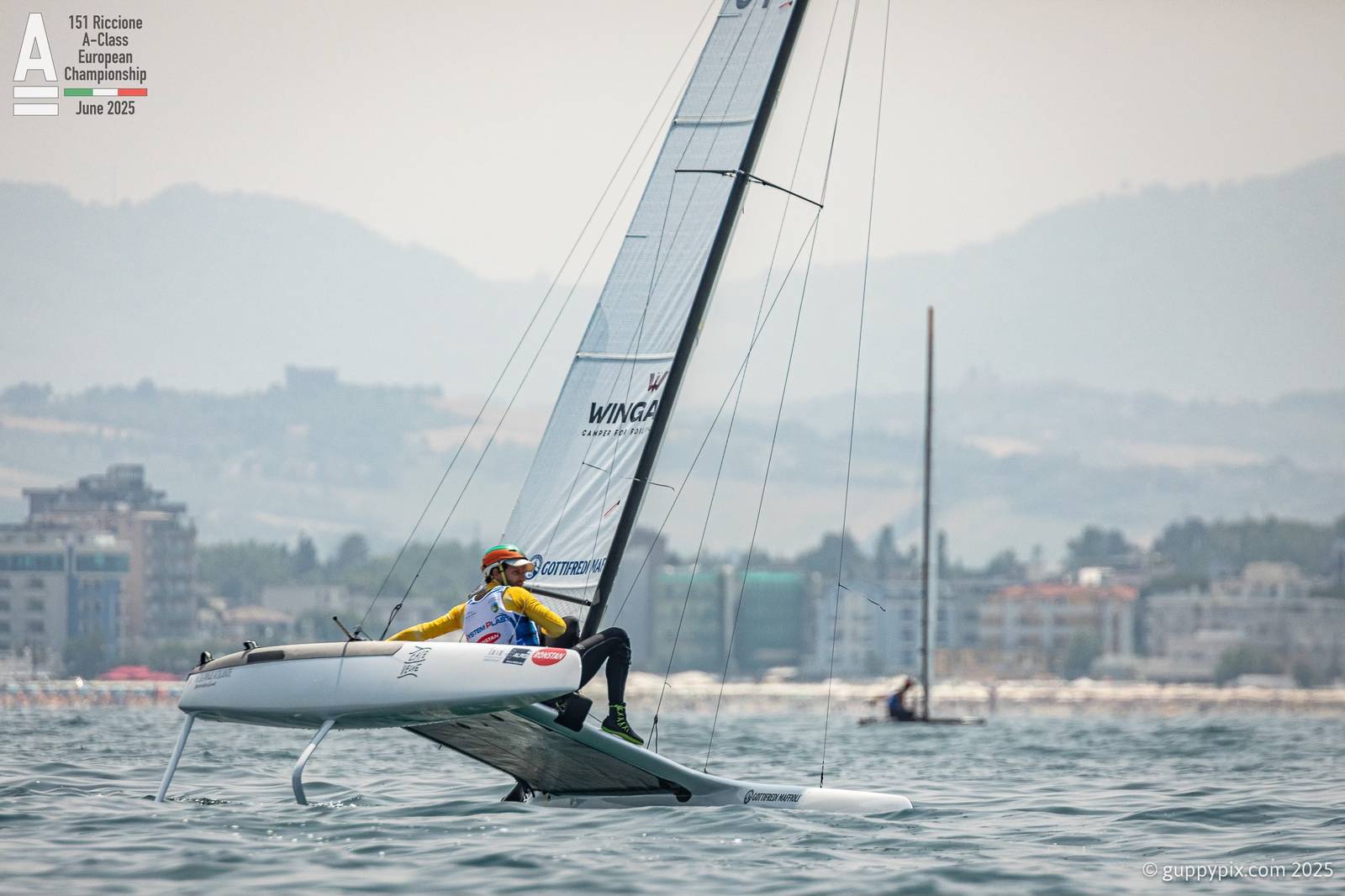
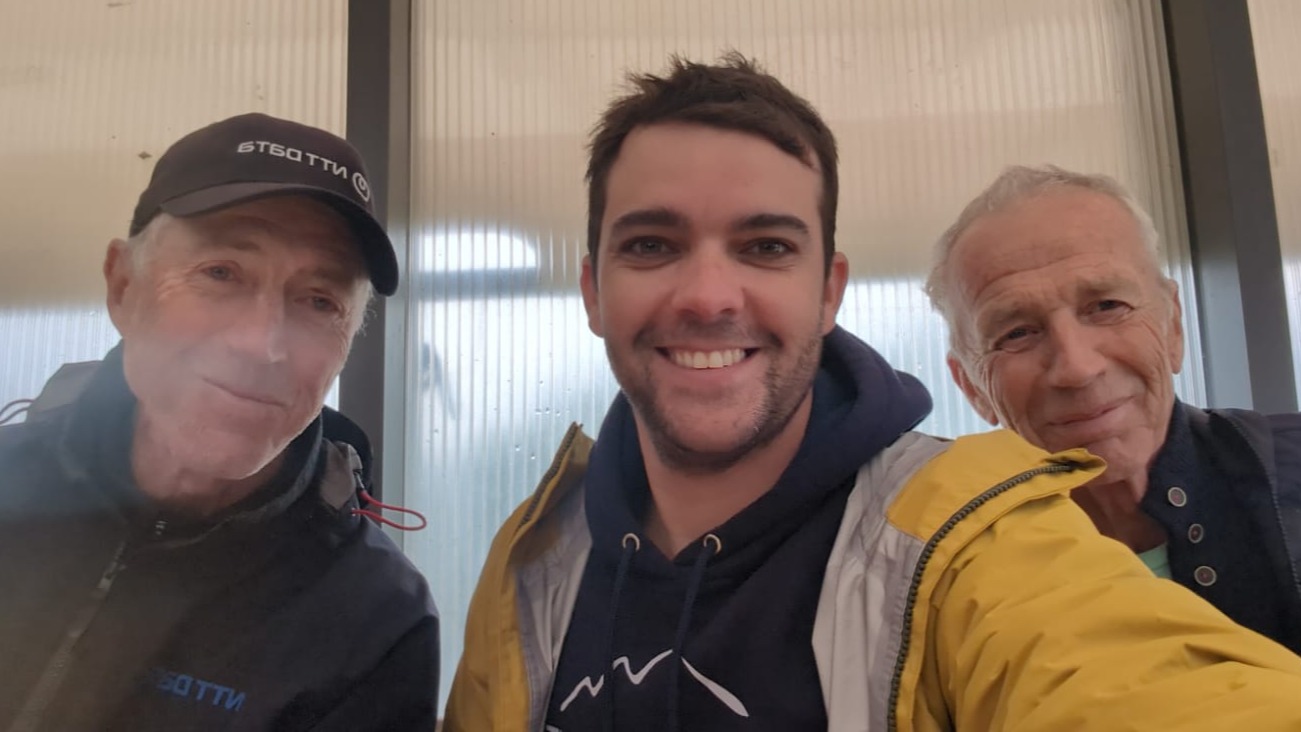
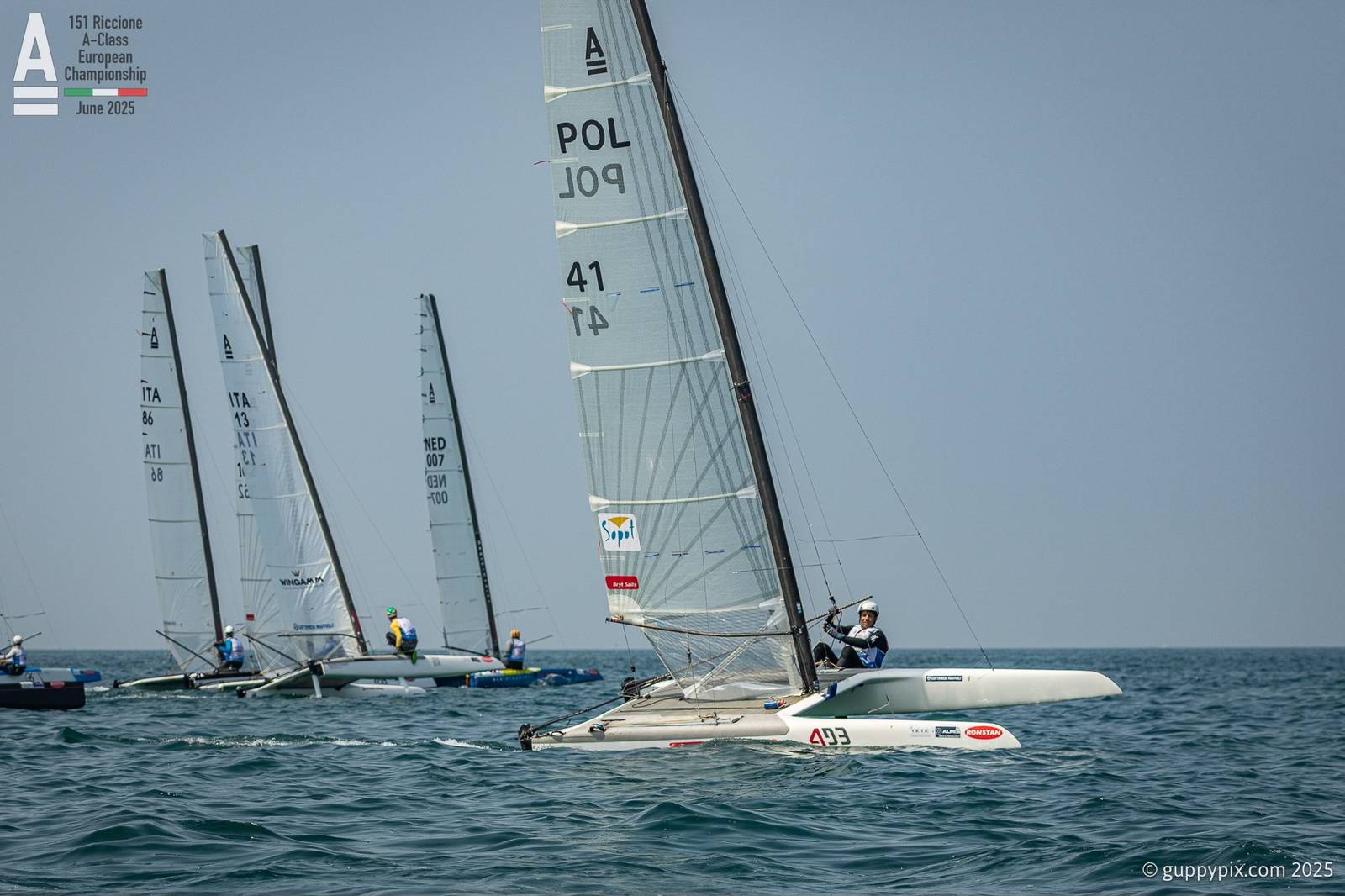
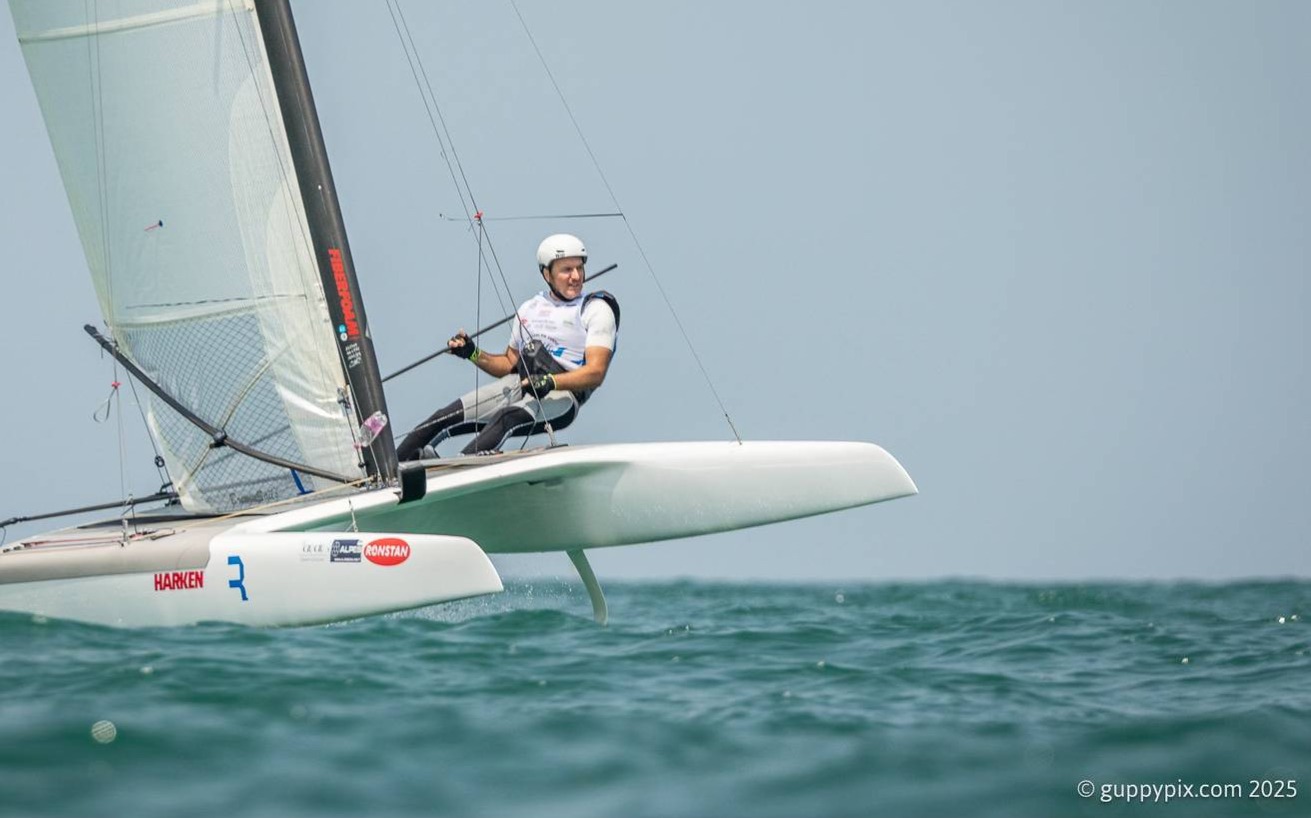
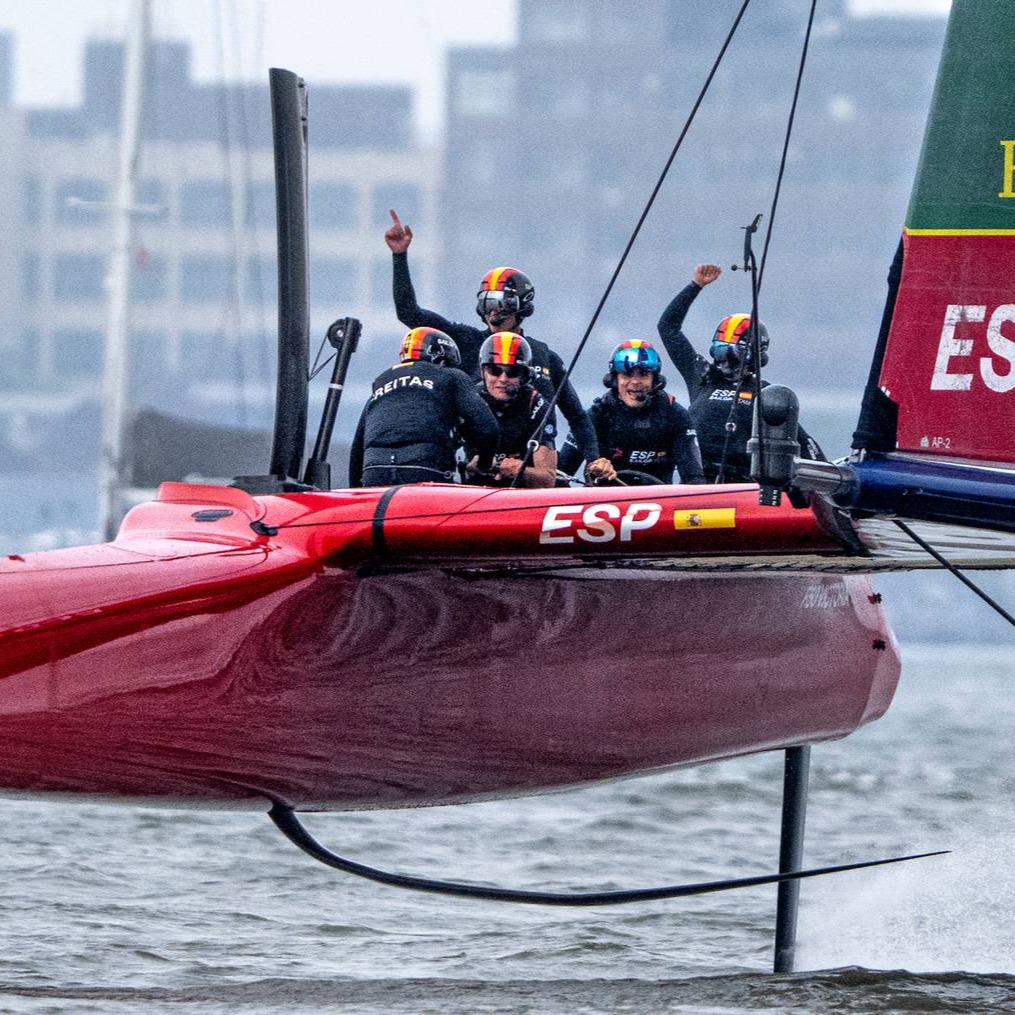
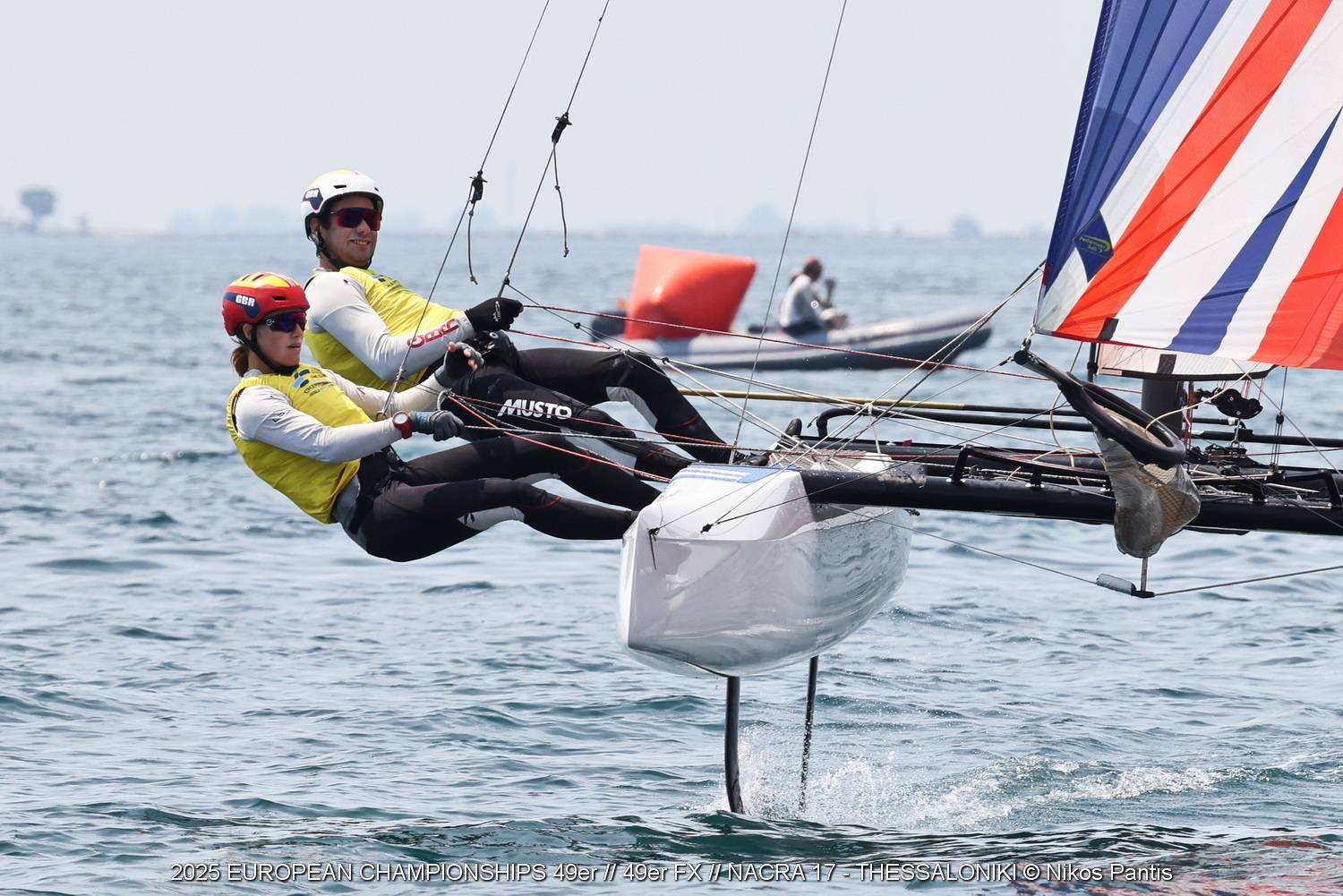
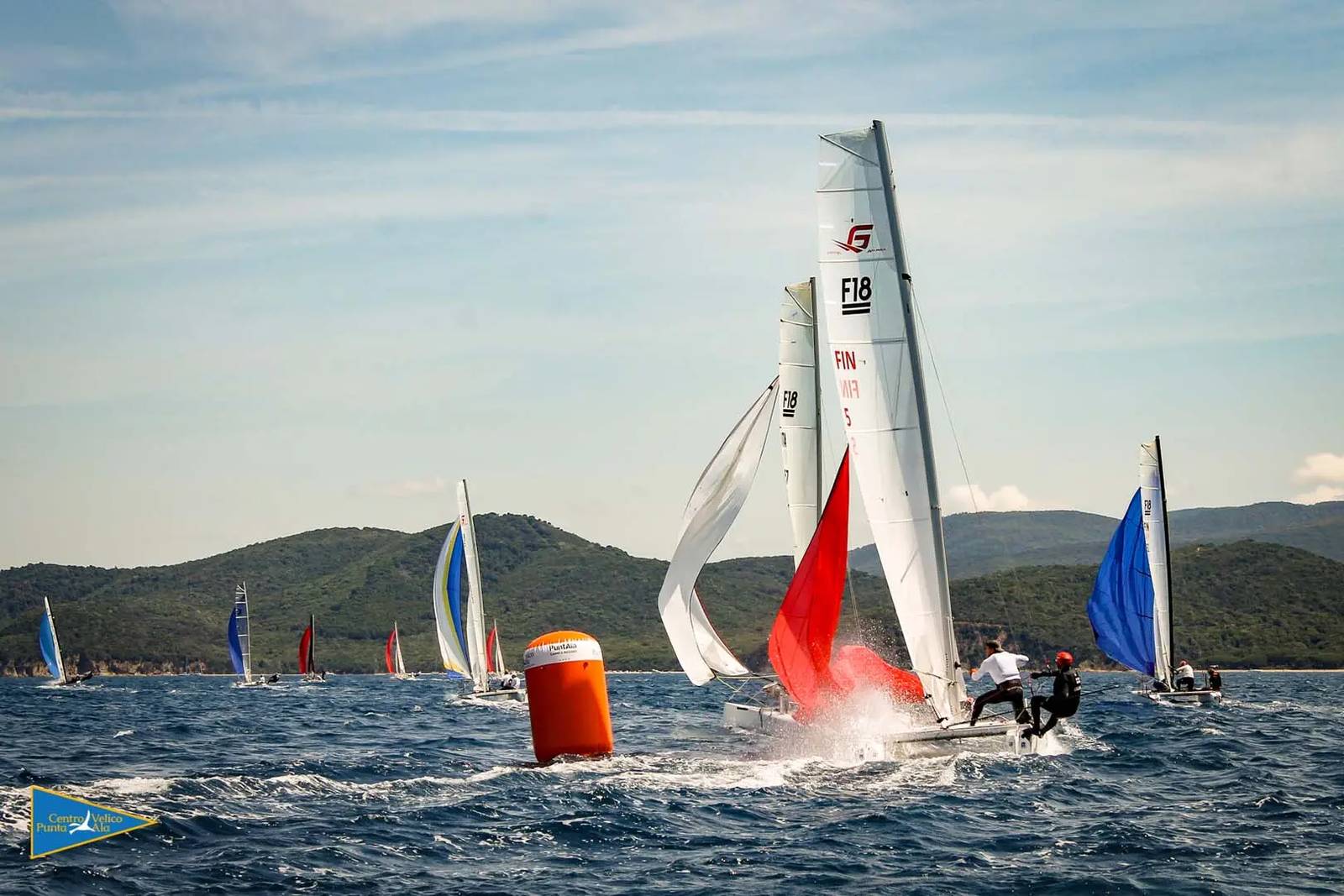
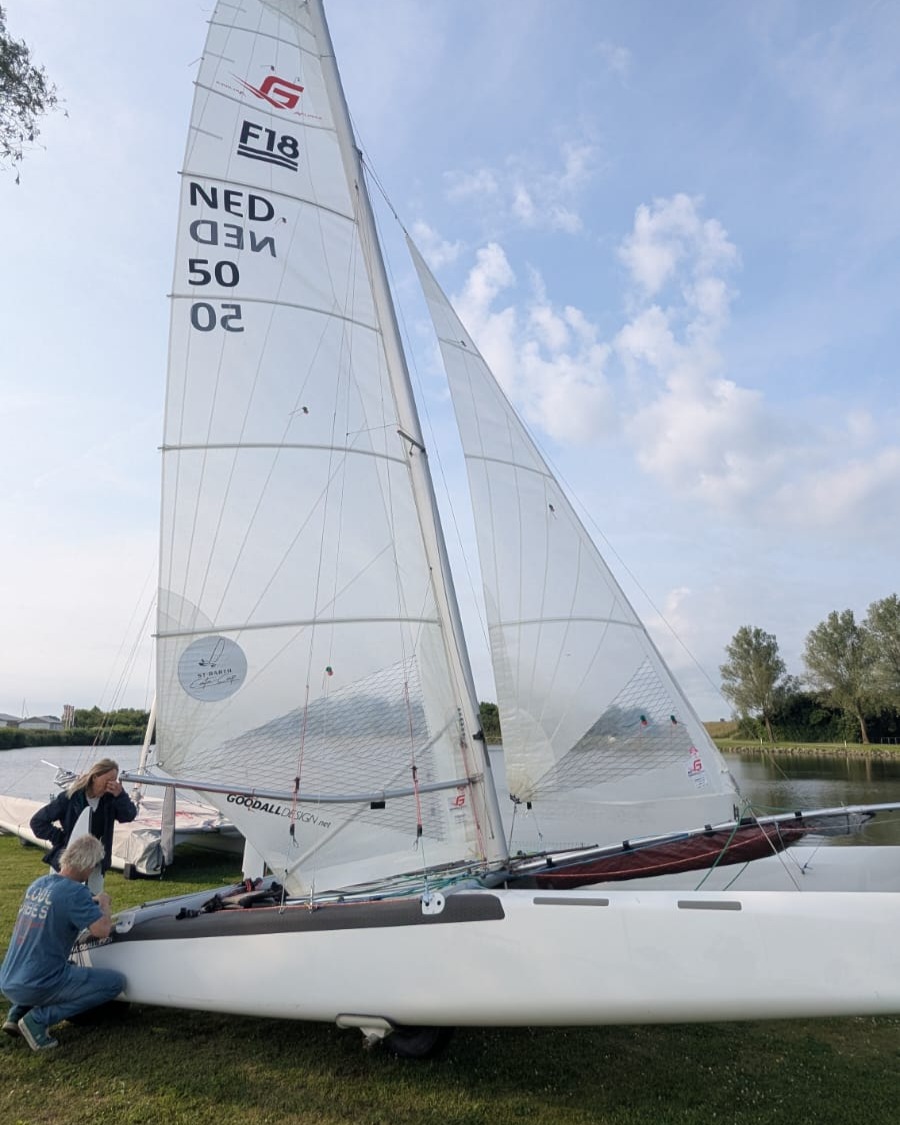
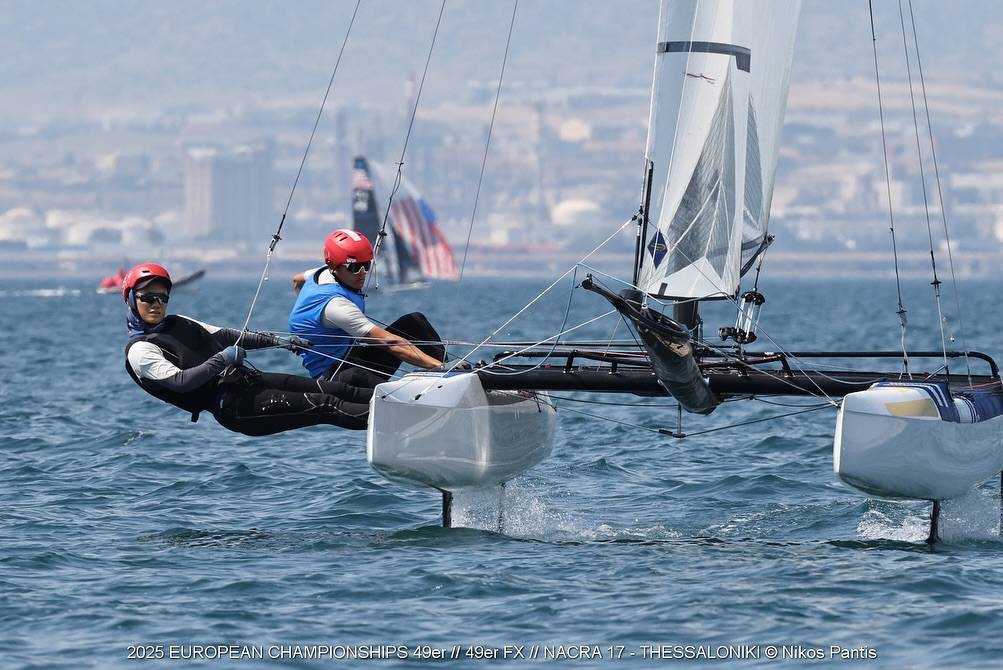



















Teo di Battista , 3° of Classic using Exploder Ad3 2016 version instead Scheurer .
I just heard that my great sailing friend and former CEO of Hobiecat Europe has passed. May The endless oceans…
...Report was sent by an F18 Sailor, if you want Hobies reported send your own, we'll publish as usual. Cheers.
Looks like in your report the Hobies are not really present. Suggest to rewrite the article.
Thanks for the great report Wik. Great battle.